#篆書
Text

a piece i did for school recently, a transcription of a classic hokkien song into seal script (an archaic form of chinese script)
main text:
獨夜無伴守燈下 春風對面吹
十七八歲未出嫁 見著少年家
果然標致面肉白 誰家人子弟
想欲問伊驚歹勢 心內彈琵琶
transliteration (tâi-lô)
to̍k-iā bô phuānn siú-ting-ē; tshun-hong tuì-bīn tshue
tsa̍p-tshit-poeh huè buē tshut-kè; kìnn-tio̍h siàu-liân-ke
kó-jiân piau-tì bīn-bah-pe̍h; siâng ka-lâng tsú-tē
siūnn boeh mn̄g i kiann pháinn-sè; sim-lāi tuânn pî-pê
translation (by me):
a lonely night, companionless, under a dim lamp; a spring breeze blows the other way.
seventeen going on eighteen, and still unmarried; catching a glimpse of a suitor.
truly what a beauty, with a soft white face; from which family do they come from?
thinking of approaching, feeling shy; the strings of the heart are strumming.
signature
恩寫望春風第一首
ern siá bāng-tshun-hong tē-it-siú
En's work, Bang Chun Hong 1st Stanza
5 notes
·
View notes
Text


这个学期,我有“漂亮的汉子课”,汉子的历史和书法,那么东西。我喜欢历史,看怎么汉子改变不同的时代。有繁体字很漂亮,我想要没有改变了。但是,也有简单字我很高兴现在使用。书法,我不耐心。我也不在乎如果我的汉子是理想。但是,我赏识这个传统的艺术。
我几乎忘了,我开始了实习期。它是在一家亚洲文化中心。我有两个中国主任。我下还这个实习期。我很高兴。很好的机会。我现在更老,不是孩子或者年轻人。好吧,我饿死了。我现在要吃爆米花。再见 !
#chinese langblr#langblr#中文#sun in 12th#mein photo#chinese#学中文#sun in cancer#美国人#书法#篆書#哎呀#studyblr#chinese studyblr#chinese practice#mandarin#aapi#stop aapi hate#stop asian hate#linguist problems#linguistics#university#university student
5 notes
·
View notes
Photo
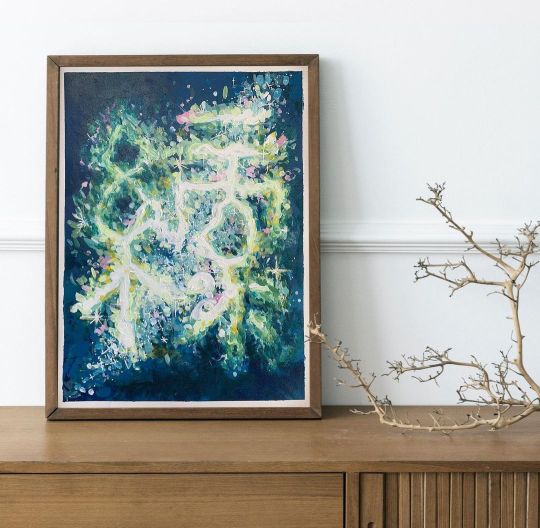
Wah!☺️ . . . . #acrylicpainting#acrylic#abstractart #acryliconcanvas#abstractpainting#artcollector#contemporaryart#abstractpainting#抽象画#芸術#藝術#arttimelapse#kunst#arte#緑#北魏#書法#chinesecaligraphy#篆書 https://www.instagram.com/p/CmyUs_1v5EJ/?igshid=NGJjMDIxMWI=
#acrylicpainting#acrylic#abstractart#acryliconcanvas#abstractpainting#artcollector#contemporaryart#抽象画#芸術#藝術#arttimelapse#kunst#arte#緑#北魏#書法#chinesecaligraphy#篆書
1 note
·
View note
Photo
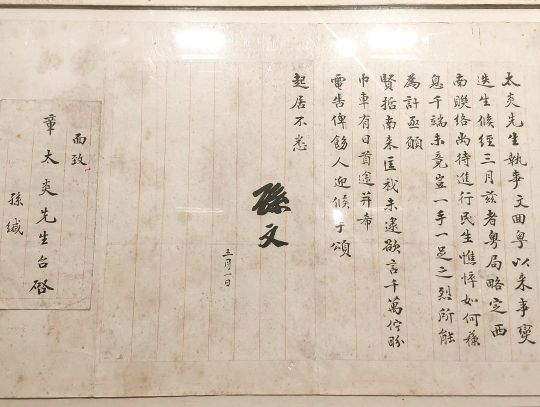
1.近代 孫文 楷書致章炳麟 札 #書道 #書法 #楷書 #孫文 #孫中山 #信札 2.近代 黃興 行書致吳稚暉 札 #行書 #黃興 #黃克強 3.近代 章炳麟 篆書題祭孫公文 #章炳麟 #章太炎 #篆書 4.近代 章炳麟 行楷祭孫公文 卷 #行楷 5-8.近代 林散之 草書自作詩《肥上雜詩九首》 卷 #林散之 #草書 #南京 #nanjing #nanking #museum #南京博物院 #nanjingmuseum #回眸南京博物院藏近現代書法特展 (at Nanjing Museum) https://www.instagram.com/p/Cflx2wplZkV/?igshid=NGJjMDIxMWI=
#書道#書法#楷書#孫文#孫中山#信札#行書#黃興#黃克強#章炳麟#章太炎#篆書#行楷#林散之#草書#南京#nanjing#nanking#museum#南京博物院#nanjingmuseum#回眸南京博物院藏近現代書法特展
0 notes
Text
第六部 曹家寶藏 楚王墓玲瓏塔 16吉金玲瓏匣
………奇幻盜墓探險小說之第六部 16
《第六部 曹家寶藏 楚王墓玲瓏塔16吉金玲瓏匣》
........
她挨著他的腿背靠沙發坐在客廳地板上看著他拿起小小的香勺挖出香粉。院子裡突然傳來一陣吱吱喳喳的鳥叫聲,她抬頭望一眼窗外卻只聽到拍翅聲不見小鳥的蹤影。她低頭繼續看他將那款名為風雨聽竹的香粉仔細填入篆印後,又耐心的用香鏟鏟走多餘香末。他換了根香掃掃走漾到香爐邊緣的細粉,然後輕輕敲了敲篆印後脫模出美麗的竹葉圖形,他對她笑了笑接過她點好的線香後點燃香篆。
一縷輕煙裊裊上昇。
她滿眼佩服的看著他起身將香爐移到當成茶几的花梨木矮櫃中間。绀青色香爐在溫潤的木色襯托下更顯古雅高貴。她不知道他怎麼有辦法每次香篆都打得那麼完美,圖形清晰乾淨,連掉出一點多餘的粉末也沒有。她自己打香篆時嘛就看運氣了,有時手一抖圖形便跟著缺塌一角。
『白澤,你怎麼什麼事都做得那麼完美?』
他笑著摸摸她的頭在她身邊坐了下來說道:『那是因為在妳眼裡妳覺得我好。』
『你真的什麼都好嘛。』她笑咪咪的說著同時遞上幾張手繪圖紙。
他接過圖稿笑著說道:『迷魂陣。』
『神獸大人怎麼可能被我的小小迷魂陣困住,嘻嘻。你幫我看看這幾張月神圖圖樣修改成這樣如何?做成篆印會好看嗎?』
『你們在看什麼?』空空和無言各端著杯咖啡湊了過來。
『這東西怎麼長得這麼奇怪?』無言拿起一張圖紙疑惑問道。
環環回答道:『這是十二月神圖…嗯,簡化版。』
原本在餐桌邊吃早餐的其他人也陸續聚了過來。
芽影問道:『什麼?月神圖?』
『都坐下來吧。這十二月神圖跟我們等會兒要討論的有關。』白澤白說道。
操操問道:『小白,是關於尋找我們曹家八寶的事嗎?』
『嗯。曹禪用暗語在羊皮卷上指出他把八寶埋藏地的線索全藏在了一只吉金玲瓏匣內,找到玲瓏匣才能拼湊出完整的八卦銅塔。』他停下來幫環環倒了杯熱茶後拍了拍淡灰藍色沙發坐墊示意她坐到沙發上來。
空空驚訝問道:『所以,我們手中的八卦銅塔是不完整的?』
『對。』
曹家兄弟面面相覷,都對這新聞感到吃驚。
『難怪我們幾代人怎麼找都找不到確切的藏寶地。』操操喃喃說道。
苒苒問道:『吉金?所以是青銅匣子嗎?我讀過說以前銅器非常的珍貴,所以西周時天子賞賜吉金指的就是賞賜青銅器物。』
白澤白看著在坐年紀最小的白苒苒點點頭鼓勵的說道:『嗯,是這樣沒錯。銅器在古代向來貴重,大致上可以說漢代之前指的金器其實就是銅、錫、鉛等的合金,它有如同黃金般的美麗色澤,硬度呢比較高比較適合製作各種器物例如鼎、簋等。苒苒,這幾天可以到書房挑幾本喜歡的書帶回去看。』
他知道白苒苒文靜害羞但極喜歡閱讀,而且小小年紀涉略的書籍種類已經挺豐富多樣的。
他繼續說道:『以我對曹禪的了解,吉金玲瓏匣上面應該也是以暗語藏密。你們讀得懂那種暗語嗎?』
操操回答道:『一千八百多年過去曹家早已無人能讀懂,我至多只能解讀出不完整的片語。』他轉頭看看其他兄弟,大家都搖搖頭。
『明白。這不是大問題,我能破譯。以前我們要給彼此留下訊息都會用同一種暗語,我至今還記得。繼續說這吉金玲瓏匣。』
...
閱讀完整故事請點擊以下網址:
https://tombrobber2021.com/
或搜尋神獸人間
....
《歡迎點讚、訂閱、分享
網站:https://tombrobber2021.com/
FB: tombrobber2021
IG:tombrobber2021
希望神獸人間 奇幻盜墓小說系列故事能讓您在紛擾繁忙的日常之外忘憂的進入一個奇幻、神秘且美好的世界... 》
#奇幻盜墓小說
#盜墓探險小說
#盜墓小說
#探險小說
#靈異小說
#奇幻小說
#玄幻小說
#奇幻文學
#網路小說
#神獸小說
#鬼怪小說
#尋寶小說
#鬥法小說
#恐怖小說
#恐怖靈異小說
#神獸
#鬥法
#盜墓
#靈異
#神怪
#白澤
#奇幻
#玄幻
#楚墓
#楚帛書
#古十二月神
#十二月神圖
#戰國帛書
#長沙子彈庫帛書
#山海經

View On WordPress
#爾雅十二月神#玄幻小說#白澤故事#盜墓小說#盜墓探險小說#神獸小說#神話小說#神怪小說#網路奇幻小說#網路小說#靈異#靈異小說#香篆#鬥法小說#鬼小說#鬼怪小說#十二月神#古十香篆#奇幻盜墓小說#奇幻小說#奇幻文學#尋寶小說#小說#恐怖靈異小說#恐怖小說#楚帛書
0 notes
Text

網頁版湯的Vampire主題中文字體好好看,宋體永遠是英文serif字體絕配好嗎
0 notes
Text
Random Stuff #12: What is Simplified Chinese?
For people like me who grew up speaking and using Chinese in day to day life, the vast majority of us have at least a basic understanding of what Simplified Chinese is, but it wasn’t until some days ago when an English speaker asked me “what is Simplified Chinese?” that I realized not many people here understand what Simplified Chinese is. So, I’ve gathered some misconceptions I’ve encountered both in real life and online, and I will try to answer them in a concise but factual manner.
But first, let us talk basics. There are three things we must cover first before going into this topic. The first is the fact that both Simplified Chinese (简体中文) and Traditional Chinese (繁體中文) used today are modern standardized systems of written Chinese, as in both were compiled within the past 100 years or so (modern Simplified from 1935-1936, then again from 1956 and on; modern Traditional starting from 1973), and the two currently widely used versions of both systems were officially standardized in the past 50 years (modern Simplified current version standardized in 2013; modern Traditional current version standardized in 1982). However, since simplified characters already exist in history (called 简化字/簡化字 or 俗体字/俗體字/”informal characters”), and “Traditional Chinese” can be taken to mean “written Chinese used in history”, in this post I will use “modern Simplified/Traditional Chinese” or “modern Simplified/Traditional” when referring to the currently used modern standardized systems.
Second is the evolution of written Chinese. Usually when this is taught, instructors use examples of how certain characters evolved over time, for example one might encounter a linear diagram like this in Chinese class:

(Original picture from Mandarinpedia)
However, this diagram only gives a very general idea of how characters evolved from more picture-like logograms to the more abstract symbols we call characters today, and does not reflect the complexity of this evolution at all. To get into these details we will need to talk about Chinese calligraphy. In terms of the evolution of written Chinese, Chinese calligraphy--all those scripts like oracle bone script (甲骨文), bronze/Jinwen script (金文), Seal/Zhuan script (篆书/篆書), Clerical/Li script (隶书/隸書), Regular/Kai script (楷书/楷書), etc--they aren’t just calligraphy fonts, but actually change the way characters are written, and are representative of the commonly used forms of written Chinese at different points in Chinese history, as in the appearance of a certain script on a historical artifact can actually be used to estimate how old the artifact is. Below is a (very) rough timeline of when each script appeared and when they are most popular:
Oracle bone script/Jiaguwen (甲骨文): Shang dynasty (~1600 BC-1046 BC)
Bronze/Jinwen script (金文; includes Large Seal script/大篆): Western Zhou dynasty (~1046 BC-771 BC)
Seal/Zhuan script (篆书/篆書; sometimes called Small Seal script/小篆 or Qin script/秦篆): compiled in Qin dynasty by chancellor Li Si/李斯 around 221 BC, was the official script in Qin dynasty (221 BC-207 AD); popularity went down after Qin dynasty but was still in use for ceremonial purposes like official seals (the archaic meaning of 篆 is “official seal”, hence the English name); still in use today in very specific areas like seal stamps, calligraphy, logos, and art.
Clerical/Li script (隶书/隸書): appeared in Qin dynasty, became the main script used in Han dynasty (202 BC-220 AD); popularity went down after Han dynasty but was still in use; still in use today in specific areas like calligraphy, inscriptions/signatures on traditional Chinese paintings, logos, and other art.
Regular/Kai script (楷书/楷書): appeared in late Han dynasty, became the main script used in Tang dynasty and has been popular ever since (618 AD-present).
(Note: there are other calligraphy scripts like Semi-Cursive script/行书/行書 and Cursive script/草书/草書 that were never mainstream yet were also significant, especially in the case of modern Simplified Chinese, but I will mention them later so this won’t become too confusing)
So if we plug the information from the very rough timeline above into the linear diagram, it becomes this:
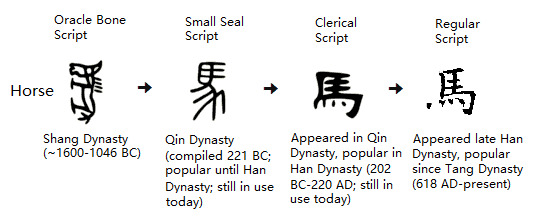
But wait! There’s even more! Because there is a thing called variant Chinese characters/异体字/異體字, which basically means that there have been multiple ways in which a character can be written (“one character, many forms”/一字多形), and these can come about as a result of homophones, personal preference of historically significant people, historical trends, mistakes in the past that stuck around, or the result of stylized scripts like Cursive script/草书/草書, which simplifies and connects strokes in a liberal manner. The reason Cursive script is important here is because of the logographic nature of written Chinese, meaning the simplifying or connecting of strokes actually changes how the character is written. Because of this, 马 and 馬 were forms that have already existed before modern Simplified and modern Traditional were compiled. A diagram that takes variations and evolution into account should look something like this:
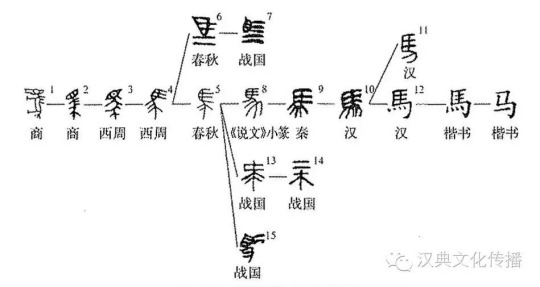
And since the above diagram did not take Cursive script into account, here’s another picture of a myriad of scripts/fonts (not in chronological order) that includes 馬 in Cursive script (mostly on bottom left):
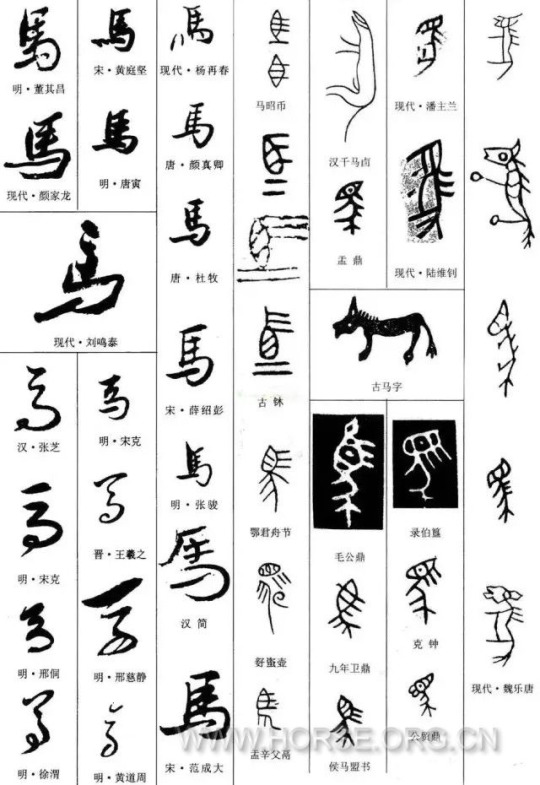
Now you may have an idea of where modern Simplified and Traditional Chinese came from: they are both compiled from existing variants. Since both modern Simplified and modern Traditional are supposed to be standardizations of written Chinese, they each set a single variant for each character as the “standard”. Modern Traditional Chinese kept the more historically mainstream 馬, and modern Simplified Chinese substituted it with the simpler variant 马. Taking all of this into account but still keeping it concise for our topic here, our linear diagram from the beginning should be modified to look like this:
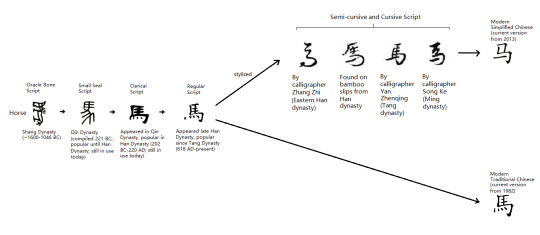
And that’s just an example of a single character. This evolution diagram can differ depending on the character too, due to there being other rules for simplifying characters. This is why standardizing written Chinese is an immense amount of work, but once standardized, the written language will be streamlined and much easier to use in communication.
Finally, we are ready to clear some misconceptions.
---------------------------------------------------
About Common Misconceptions Regarding Modern Simplified Chinese:
“Simplified Chinese replaced all Traditional Chinese characters”. Untrue. Modern Simplified Chinese only standardized 2274 of the most used Chinese characters and 14 radicals with simpler variants. That’s really all there is to it. For reference there are a total of about 60,000 Chinese characters, and about 3,500 of these are deemed to be often-used characters; so only ~3.7% of all Chinese characters and ~65% of often-used Chinese characters are simplified in modern Simplified Chinese. Play around with any online tool that can switch between modern Simplified and modern Traditional, and you will find that many characters stayed the same.
“Simplified Chinese is the opposite of Traditional Chinese”. Untrue. Modern Simplified Chinese is just a simplified and standardized system of written Chinese. Modern Simplified Chinese and modern Traditional Chinese are not “opposites” of each other at all, just different standardized systems serving different purposes. Modern Simplified was compiled with ease of use in mind, since Traditional characters can be time-consuming to write, for example imagine writing 聲 (sound) when you can just write 声 instead. Also back when Simplified was being introduced to the public, a huge part of the population was illiterate, especially farmers, poor people, and women, so Simplified Chinese was a great way to quickly educate them on reading and writing, and to improve efficiency in all aspects of life. Knowing how to read and write is key to education, and education is a must if people's lives were to be improved at all.
“Simplified Chinese is Mandarin”. Untrue. Mandarin is a spoken dialect that came from Beijing dialect, and both modern Simplified and modern Traditional Chinese are modern standardized systems of written Chinese. One concerns the written language and the other concerns a spoken dialect.
"Simplified Chinese was invented by the Communist Party". Untrue. As mentioned before, most characters used in modern Simplified Chinese are already present in ancient texts, artifacts, and inscriptions as variants. Apparently the only character simplified by PRC was �� (blinds/curtain), which became 帘 in modern Simplified Chinese. History wise, Republic of China was the first to start compiling Simplified Chinese in 1935 and introducing it to the public, but this was called off after 4 months. PRC modified and built on the original plan, and introduced it to the public again starting from 1956.
"Simplified Chinese is to Traditional Chinese as Newspeak is to English in 1984". Completely untrue. Modern Simplified Chinese is just a simplified way to write commonly used Chinese characters and does not alter the meaning of the characters. There are some Traditional characters that are combined as one simplified character in modern Simplified, but the meanings are not lost or altered. For example, 發 fā (development) and 髪 fà (hair) are combined as 发 in modern Simplified, resulting in 发 having 2 different pronunciations (both fā and fà), and each of these pronunciations carrying their original meaning. The meaning of neither 發 nor 髪 was lost, 发 will just have a longer dictionary entry.
"Simplified Chinese is a huge change from Traditional Chinese". Only partly true in that it is a change, but it is a change justified by the evolution of written Chinese throughout history. The origin of most modern Simplified Chinese characters come straight from history itself, since many characters had alternative ways in which they were written (sometimes for convenience), for example these characters below. Each row contains different forms of a single character (smaller characters indicate what time period these variants are from; ex: 汉碑 means the variant is from a Han dynasty inscription).
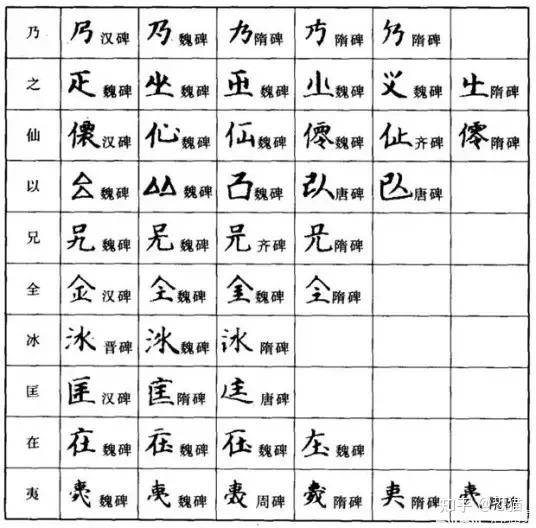
In reality, written Chinese has always been standardizing itself. Less-used variants become forgotten over time, sometimes only rediscovered through archaeology. Besides, effective written communication does partly rely on standardization of the written language (imagine everyone writing in the various variants...how horrible would that be?). Modern Simplified just took this one step farther and made some characters easier to write.
“Traditional Chinese is no longer used in Mainland China”. Untrue. Modern Simplified is the commonly used form in Mainland China, but Traditional is still used in a variety of places, such as on store signs/brand logos, particularly for stores/brand that are old. For example the old Beijing brand 天福号 below (est. 1738). On their logo, 天福号 is written as 天福號 from right to left, which is the traditional way of writing horizontally.
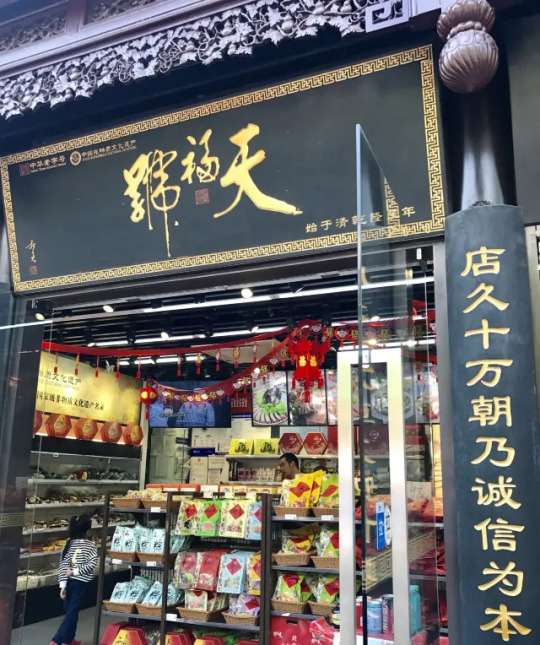
Traditional Chinese is also used in the logos for many universities in China:

Another way in which Traditional Chinese is commonly used in mainland China are personal seal stamps. Often times when people carve seal stamps for personal use (for example showing ownership on artwork they created or collected), they would put their name/courtesy name/nickname on the seal stamps in Zhuan/篆 calligraphy font, and Zhuan font use Traditional Chinese. Of course, the ways in which Traditional Chinese is still used in mainland China isn’t restricted to these two examples here. There are other places where Traditional Chinese is still used, such as traditional paintings/国画, calligraphy/书法, and many many more.
“People who grew up reading Simplified Chinese cannot read Traditional Chinese”. Depends on who you are asking. I grew up learning only modern Simplified, and I can read Traditional/modern Traditional Chinese just fine without having to actually learn it from anyone. Most people who grew up with Simplified Chinese should be able to read at least some Traditional without help. There are some people who say they can’t read Traditional without taking the time to learn it, but I doubt they’ve really tried, to be very honest.
---------------------------------------------------
And that’s it for the misconceptions!
My personal philosophy regarding modern Simplified Chinese and modern Traditional Chinese can be summed up as 识繁写简, or basically “know how to read Traditional and know how to write Simplified”. In a way, knowing how to read Traditional is a bit like knowing how to read cursive: a lot of history could be lost if we completely stopped using/learning about Traditional Chinese, but to meet the fast pace that modern life demands, I think modern Simplified Chinese is the more convenient choice for writing for day-to-day purposes. Since quite a few posts on this blog concern history, you will find that I usually use both Traditional Chinese and Simplified Chinese for historical things, since modern Traditional Chinese is closest to what people used in the past, and modern Simplified Chinese is more often used now. If it appears that I didn’t put modern Simplified and modern Traditional side by side, that usually means either the characters stayed the same and there’s no need for me to type the same thing out again, or the topic does not call for both to be shown.
Finally, the fun part. Here’s a Seal/Zhuan script calligraphy work by Mi Fu/米芾 (1051-1107):

Does something look familiar there?
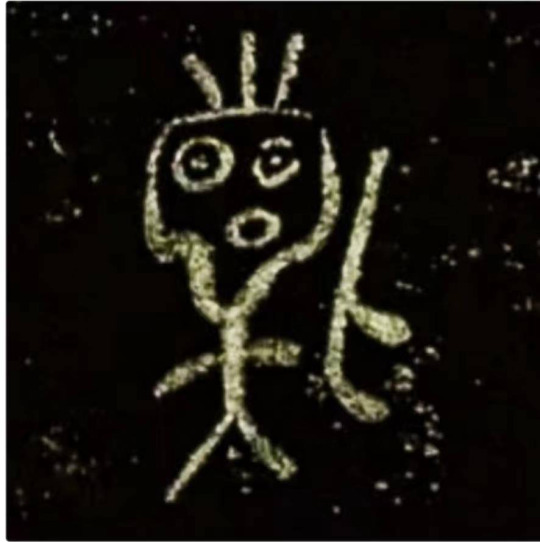
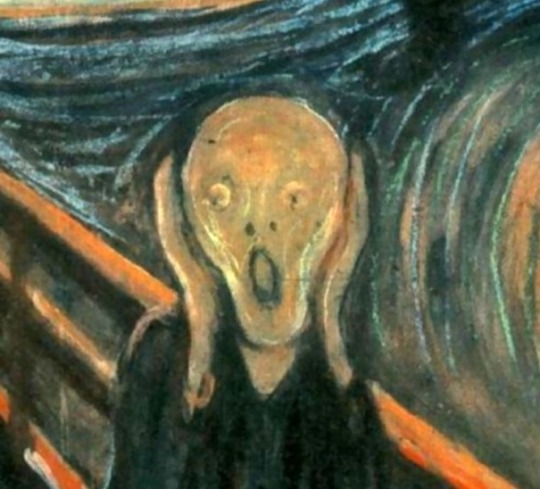
#simplified chinese#chinese language#language#written language#traditional chinese#chinese calligraphy#chinese history#random stuff#what is simplified chinese
990 notes
·
View notes
Photo
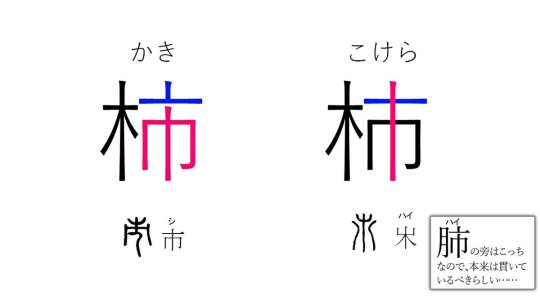
Xユーザーの三崎律日さん:「難見分け漢字で有名な「柿(かき)」と「杮(こけら)」、説文解字の篆書ではちゃんと別の字だったのね。 あと「肺」が「杮(こけら)」側の字だったことを初めて知りました。」
21 notes
·
View notes
Photo
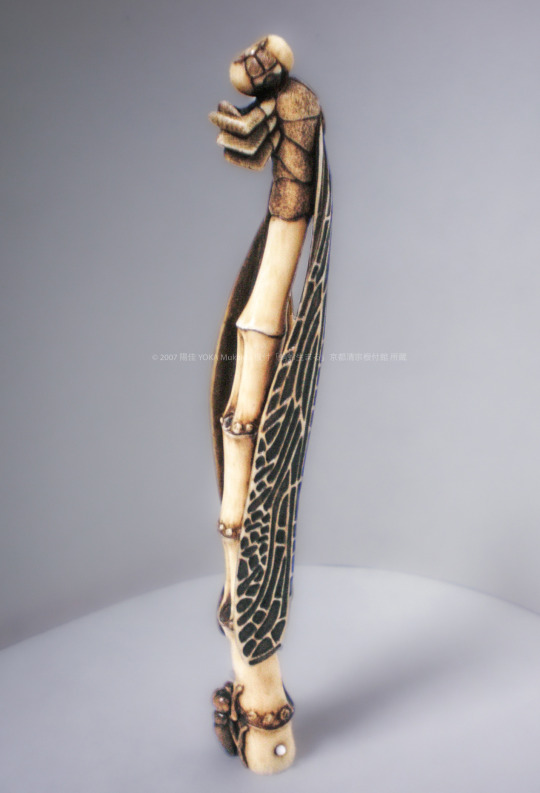
A netsuke produced in 2007 that condenses the time and space of a dragonfly climbing on a bamboo protruding from the water and emerged into a dragonfly into a single "netsuke". Carver/artist 向田 陽佳 根付師 YOKA /書・篆刻は 向田 湖蝶の名で活動
@monouako
Kyoto Seishu Netsuke Art Museum.
209 notes
·
View notes
Text
韓国展用の作品🇰🇷
------------✂︎ キリトリ ✂︎ ------------
命名書作成・ロゴ作成・名刺等作成・書道教室・その他承っております!
各種お問い合わせは
もしくはDMまでお気軽にどうぞ!
#千日書道教室 #本厚木 #本厚木書道教室 #書道 #書道教室 #習字 #書道家 #書家スタグラム #古典 #臨書 #楷書 #行書 #ペン字 #細字 #仮名 #隷書 #篆書 #刻字 #calligraphy #japan #shodo #japanesecalligraphy
#YouTube #オネェ書道家 #お姉書道家 #おねぇ書道家 #ビジネスおねぇ #深夜書道 #深夜書道BAR
2 notes
·
View notes
Quote
甲骨 → 金文 → 小篆 → 隷書 → 草書・行書・楷書 → 明朝
という漢字の変遷に対し、
亀の甲 → 青銅器 → 石 → 竹・木 → 紙 → 発光体
と、記録するものも変化してきました。
研究ノート | 摩擦について
2 notes
·
View notes
Text
名字印章雕刻的講究,現代人應不應該刻一方自己的印章
許多畫家和書法家身邊總是有名字印章。 我在哪裡可以拿起一個字,畫一幅畫,或者蓋上一個休閒的印章,或者蓋一個名字的印章。 現在讓我們談談印章。
很多人都說我不畫畫也不寫字。 我雕刻沒用。 但讓我告訴你,古人都想在身上戴上徽章。 有一枚印有他自己名字的印章。 現在,我也建議許多當代朋友也應該在他們周圍有一個印章。 這是什麼印章? 雖然從表面上看,它似乎刻著自己的名字,比如石頭或木頭。 但這是古老的護身符。 許多人認為護身符一定是護身符,但事實並非如此。 這個符號在古代其實是一個文字或圖騰,叫做“福”,但它有多種形式,名字印章就是其中之一。 如果你經常戴這個印章,古人認為你會得到祝福。
說到印章,我們首先應該知道它們的資料。 大多數古人有三種資料,其中一種是石頭,
一個是木頭,另一個是銅。 銅印章早已保存下來,但銅是一種金屬,據說對人體有害,
最好的選擇是木頭和石頭。 然而,木材有時很容易磨損,囙此不適合長期保存。 那麼首選就是第一塊石頭。
有很多種石頭,如青田石、壽山石、巴林石和雞血石。 這些是很好的分類。 有了這些石頭,我們必須掌握它們是為了什麼而雕刻的? 首先,你應該知道你的名字是刻出來的。 如果你有三個字元,建議你在三個字元上加一個印章。 例如,如果你叫胡一刀,你可以把它刻成胡一刀,
說到雕刻,我們注重陰陽。 事實上,陰是凹的,陽是凸的。 通常,一些人喜歡陰雕,因為它更簡單、更複雜。 事實上,對於那些熟練的科技人員來說,兩者都很容易雕刻。 不過,我一般建議用小篆代替隸書、魏碑、楷書或草書。 尊重你的名字,儘量使用小篆。 這樣的人感覺奢侈、大氣、有文化。 畢竟,小篆的字體離我們有點遠。
以上是一些建議雕刻我們的姓名印章或一些所謂的預防措施的方法。 古人認為,人們有一個著名的章節是非常好的,它可以幫助你轉化一些所謂的週邊反向磁場。 古人對此非常重視。 沒有人能保證它有多有效。 但你的身體上有一個印章。 至少你可以談談中國傳統文化,中國傳統文化、雕塑、書法、人物結構等等。
1 note
·
View note
Photo
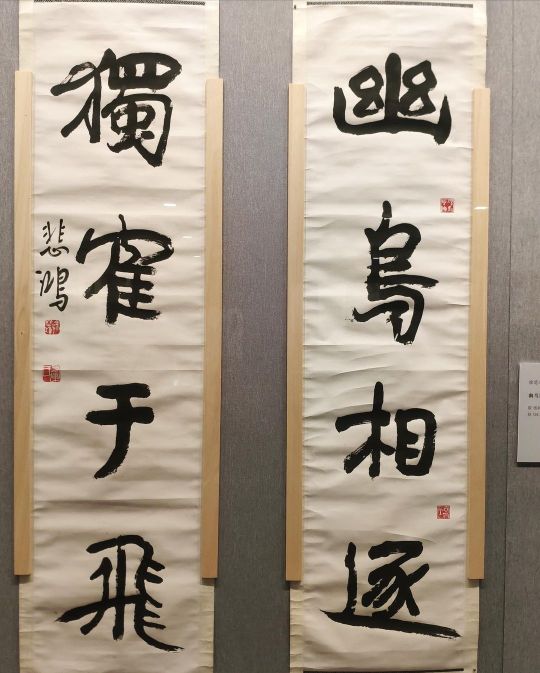
1.近代 徐悲鴻 行書四言 聯 #書道 #書法 #行書 #徐悲鴻 #對聯 2.近代 張大千 金文五言 聯 #張大千 #金文 3.近代 董作賓 篆書七言 聯 #董作賓 #篆書 4.近代 章士釗 行書《玉樓春》一闕 軸 #章士釗 5.近代 黃炎培 行書自作詩 軸 #黃炎培 6.近代 柳亞子 行書蘇南文管會補壁詩 軸 #柳亞子 7.近代 胡小石 行楷《南京陷及期書憤》 軸 #胡小石 #行楷 8.近代 郭沫若 行書自作詩 軸 #郭沫若 9.近代 吳湖帆 行書七言 聯 #吳湖帆 10.近代 鄧散木 篆書書納蘭性德詞《青玉案·人日》 軸 #鄧散木 #南京 #nanjing #museum #南京博物院 #nanjingmuseum #回眸南京博物院藏近現代書法特展 (at Nanjing Museum) https://www.instagram.com/p/Cfjjg9vBFFz/?igshid=NGJjMDIxMWI=
#書道#書法#行書#徐悲鴻#對聯#張大千#金文#董作賓#篆書#章士釗#黃炎培#柳亞子#胡小石#行楷#郭沫若#吳湖帆#鄧散木#南京#nanjing#museum#南京博物院#nanjingmuseum#回眸南京博物院藏近現代書法特展
0 notes
Text
「大雅齋」粉彩壽桃鸚鵡紋長方花盆
為清代文物
高27釐米,口徑31.5釐米,底徑24釐米。
此器的胎體較厚重,口部略內折;
方唇,斜直腹,平底;下設四肢角足,底部有兩只小洞;
口沿面設藍彩回紋,內外壁及底部均施白釉;
外壁繪粉彩壽桃鸚鵡紋。
正面一側有「大雅齋」紅彩楷書款,其右側鈐橢圓形雙龍紋篆書「天地一家春」陽文印章款。
現收藏於南京博物院。
亞洲區香港福義國際拍賣行,本公司擁有眾多實力買家與高端的資源,藏品鑒定拍賣服務。
聯絡人:馬生 WhatsApp:852-5620-4116
LI ne:FuXi0814 WeChat:Fuxi0814
Email: [email protected]

0 notes
Text
第六部 曹家寶藏 楚王墓玲瓏塔 31 封禁鎮門
『大致的意思是此門是封禁之門,將永世鎮禁門內的幽冥之王和追隨祂的陰鬼之魂。唯有鳳凰血脈,火神後裔才能解開此道封禁,並喚醒幽冥之王的大軍共同抵禦外敵,但屆時大地將陷入永恆黑暗。解禁者慎思。其他的就是一些咒語。』
阿朝皺著眉說道:『火神?鳳凰血脈?楚人認為自己的祖先是火神祝融,他們的圖騰就是鳳凰。所以意思是能解開這封印的得是楚國國君或王家血脈。你說這文字已有後世隸書的雛形,加上這陵墓所在的位置…那是不是可以推斷出墓主的年代是戰國中晚期了?』
………奇幻盜墓探險小說之第六部 31
《第六部 曹家寶藏 楚王墓玲瓏塔 31 封禁鎮門》
.......................................
幾道手電筒光束投射下反射出一片片淡淡的金色亮光。他們驚嘆的注視著擋在面前的一扇雙開青銅巨門,門上是幅顯眼華麗的鎏金圖畫,匠人技法純熟且完美大器。
三隻往下俯衝的鳳凰展開華麗的翅膀和尾翼,尾翼散開如孔雀開屏。牠們尖長的鳥喙各銜著一柄利劍刺向一張詭異大臉,那張大臉巨目凸出,呈四白眼狀,正怒目瞪視著來者。
它豐厚的上嘴唇邊各眥出一根虎牙,雌裂大嘴兇狠叼著一個小人,小人面露驚恐、表情痛苦並生動的揮舞著四肢奮力掙扎著。觀看的人幾乎可以聽到他撕心裂肺的尖叫聲。
這張表情生動的大臉還顯眼的以錯金加上鎏金的技法描繪出皮膚上代表虎斑的紋路,虎紋在光照下閃閃發光。
虎臉周邊環繞著一圈白玉,玉上鑲著標誌性的青銅鏤空雲紋。其他的部分則同樣以金絲條精細鑲崁出整齊排列的數行優美文字。
整幅圖畫張力十足,色彩在金、銀、青和沉厚的暗色中跳脫出一股悠遠、美麗又恐怖的故事。
『怎麼又是這張臉?對西王母的崇拜?但為何鳳凰會銜劍刺殺他?西王母的青鳥不就是鳳凰嗎?象徵叛變?』夭夭喃喃自語的連續提出幾個疑問。
阿怙研究著那些文字後問道:『小白,門上這些字是…鳥蟲文?』
白澤白答道:『這是楚人特有的鳥蟲文還混了些隸書的篆文。』
環環問道:『楚人特有的?怎麼分辨?』
『妳看這些字每個字的頭和尾都講究上下平衡,而且風格優美流暢,字體修長,可以說有些蒲柳之姿的味道。而中原其他幾國的篆書則感覺比較氣勢雄渾,字尾比字頭細,比較講究規整也較呆板。不過,這門扇上已有變體字,你們看這幾個字就已略具後世常見的隸書雛型了。』
她困惑的看著那些像符號的文字搖搖頭說道:『沒有可參照對比我還是不大明白。』
阿怙一雙微微上斜的精靈大眼對環環挑了挑後做了個鬼臉說道:『我也是。』
夭夭好奇問道:『小白,戰國時各國使用的文字差異很大嗎?』
...
閱讀完整故事請點擊以下網址:
https://tombrobber2021.com
或搜尋神獸人間
....
《歡迎點讚、訂閱、分享
網站:https://tombrobber2021.com/
FB: tombrobber2021
IG:tombrobber2021
希望神獸人間 奇幻盜墓小說系列故事能讓您在紛擾繁忙的日常之外忘憂的進入一個奇幻、神秘且美好的世界... 》
#奇幻盜墓小說
#盜墓探險小說
#盜墓小說
#探險小說
#靈異小說
#奇幻小說
#玄幻小說
#奇幻文學
#網路小說
#神獸小說
#鬼怪小說
#尋寶小說
#鬥法小說
#恐怖小說
#恐怖靈異小說
#神獸
#鬥法
#盜墓
#靈異
#神怪
#白澤
#奇幻
#玄幻
#獬豸
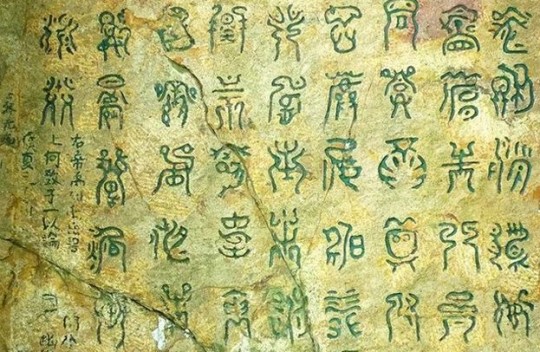
View On WordPress
#玄幻小說#玄幻探險小說#甲骨文#白澤故事#盜墓小說#盜墓探險小說#祝融#神獸小說#神話小說#神怪小說#網路奇幻小說#網路小說#銘文#靈異#靈異小說#西王母#鬥法小說#鬼小說#鬼怪小說#鳥蟲文#奇幻盜墓小說#奇幻小說#奇幻文學#尋寶小說#小說#恐怖靈異小說#恐怖小說#探險小說#楚墓
0 notes
